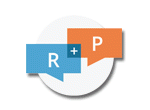Supporting Successful District Implementation of New Science Standards

- Teachers should be deeply and meaningfully engaged in district planning work. This will result in district-level initiatives that best support school and students’ needs.
- District Staff & PD Providers should consider how to use implementation of new standards to make deep, systematic, and sustainable changes to the way students learn science.
- School Leaders should understand strategies and structures affecting district-level initiatives and how to enact them. Communication is key with both teachers and community.
What Is The Issue?
Implementing new science standards is a complex process that intersects with many other elements in the educational system. What’s more, successfully implementing science standards based on the NRC Framework requires major changes to the way science instruction is conceived of, structured, supported, and resourced. To help with these challenges, and with extensive feedback from successful district-level science education leaders, Achieve has developed a set of three new resources to support district leaders to strategically implement science standards.
Authors:
VANESSA WOLBRINK, MICHAEL LACH, ANEESHA BADRINARAYAN, TERESA ELIOPOULOS, MATT KREHBIEL, MOLLY EWING, AND IRAM SHAIKH | JULY 2017
Reflection Questions
- What is your district’s plan to improve student outcomes in science? What strategies are you using? Which are you rejecting?
- How can you make equity central to your science standards implementation effort?
- How will you define success, monitor progress, and adjust accordingly along the way?
- How can you involve educators in the planning process and elicit feedback from stakeholders?
Things to Consider
- Districts need a plan for science education. Three-dimensional standards based on the NRC Framework represent a new vision for how science should be taught, and implementing these new standards across a district is hard. The process is rarely linear, requires the support of many stakeholders, and is shaped by many variables. Every district needs a plan for this process, in which district leaders articulate their goals and strategies to reach them.
- Local context matters. District leaders should keep their local context in mind and use the tools linked below to support the work that is relevant to them. These resources are meant as a guide to help district leaders systematically think about common challenges. They are not a recipe to be followed, but a springboard—a series of recommendations to help leaders think about their own contexts.
- Build in feedback loops. District leaders should have a system for checking in and monitoring progress in different areas of an implementation plan, and that can be accomplished by setting goals, milestones, and timelines for concrete measures of success, then using those to monitor progress and adjusting the plan as necessary. District leaders should build in opportunities to get feedback from teachers, school leaders, and other educators on the ground. Communication and policy planning should not be a one-way street.
Attending to Equity
- Students and teachers from under-resourced schools often are asked to adopt additional initiatives, which are added and dropped frequently. Implementing new science standards systematically at the district level, with proper supports for teachers, can alleviate the burden on this population, helping to ensure that these students have the same opportunities to learn science in meaningful ways.
- District leaders should make equity central as they develop and monitor metrics used to determine the success of implementation. For example, the first indicator of successful implementation is “All K–12 students have adequate opportunities to learn science.” This has strong implications for all parts of implementing new standards, including instructional materials, instructional time, course offerings, teacher professional learning, and other areas.
Recommended Actions You Can Take
These resources from Achieve are designed to help district-level professionals guide implementation of new science standards:
- The District Implementation Indicators take a broad view of science standards implementation, identifying 13 categories that illustrate what successful implementation looks like and providing concrete end goals that districts can work toward. Each category also includes example actions that districts might take up to further that indicator and use to create milestones to use when monitoring progress.
- The District Implementation Workbook is designed to help district leaders think more comprehensively and concretely about their own contexts. A combination of self-assessments and exercises, this workbook describes the common issues and challenges associated with standards implementation and presents key questions, timelines, decisions, and considerations for implementation leaders.
- The Lessons Learned from the California NGSS Early Implementer Districts tell stories from the initial experiences of nine districts in California working to implement the new standards, focusing on the critical areas of professional learning and instructional materials.
ALSO SEE STEM TEACHING TOOLS
- #5 Curriculum Adaptation
- #9 District Implementation
- #13 Professional Development
- #23 Evaluating Curriculum
STEM Teaching Tools content copyright 2014-22 UW Institute for Science + Math Education. All rights reserved.
This site is primarily funded by the National Science Foundation (NSF) through Award #1920249 (previously through Awards #1238253 and #1854059). Opinions expressed are not those of any funding agency.
Work is licensed under a Creative Commons Attribution-ShareAlike 4.0 Unported License. Others may adapt with attribution. Funded by the National Science Foundation (NSF). Opinions expressed are not those of any funding agency.


 Email Feedback
Email Feedback


